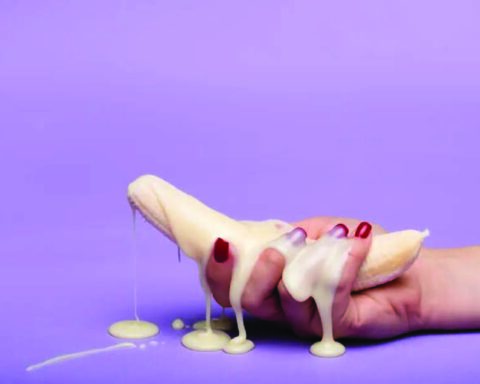Search
About Us
Follow
Signup to Newsletter
Get our regular posts notification, just subscribe our newsletter and keep reading.

How Soon Can I Give My Dog Another Flea Treatment? Pet Care

How soon can I give my dog another flea treatment? Fleas can be a persistent nuisance for our furry friends, and staying on top of their treatment is crucial to ensure their well-being.
But when is the right time to administer another round of flea treatment? As a responsible pet owner, ensuring the health and well-being of your furry friends should be your top priority.
Regarding flea treatment, you want to provide your dog with effective relief as quickly as possible.
However, it’s essential to consider the optimal timing for administering the subsequent flea treatment to maintain the product’s efficacy and keep your pets free from pesky parasites. Let’s kick off by answering the question,
How soon can I give my dog another flea treatment?
The timing of administering another flea treatment may vary depending on the specific product you are using.
Some flea treatments may require two weeks before reapplication, while others up to 3 months. It is essential to follow the instructions provided by the product manufacturer
Why Should You Follow The Recommended Treatment Schedule?
Fleas are not only annoying for dogs, but they can also pose serious health risks. That’s why following the recommended treatment schedule accurately and consistently is crucial.
By doing so, you can effectively control and eliminate fleas from your dog’s coat, preventing any potential infestations.
Following the recommended treatment schedule extensively ensures you provide your dog with the highest protection against fleas.
Flea treatments target different stages of the flea life cycle, including eggs, larvae, and adult fleas.
By administering the treatment according to the schedule, you can target each stage effectively and break the flea life cycle. This comprehensive approach is crucial for long-term flea control and preventing re-infestation.
Accuracy in following the recommended treatment schedule is important because flea treatments have varying durations of effectiveness.
Some treatments may require monthly applications, while others may protect for up to three months.
It is important to know the specific duration of effectiveness for the product you are using and adhere to the recommended schedule accordingly.
Skipping or delaying treatments can leave your dog vulnerable to flea infestation and may reduce the effectiveness of the treatment.
Topical Or Oral Flea Treatment?
Topical flea treatments are usually spot-on treatments applied directly to the pet’s skin, typically between the shoulder blades.
These treatments contain active ingredients that kill and repel fleas, preventing infestations. On the other hand, oral flea treatments are medications taken orally by the pet. These medications work by circulating in the pet’s bloodstream and killing fleas when they bite.
Pet owners often prefer topical flea treatments because they are easy to apply and provide quick relief.
These treatments start working within a few hours and are effective for several weeks, depending on the product.
They also have the advantage of being waterproof, so you can still bathe your pets or go swimming without compromising the effectiveness of the treatment.
However, some pets may have sensitive skin reactions to topical treatments, so monitoring their reaction after application is important.
On the other hand, oral flea treatments are convenient for pet owners who may have difficulty applying topical treatments or have multiple pets to treat.
These medications are usually available as chewable tablets or flavored liquids, making them easier to administer.
Oral treatments provide systemic protection against fleas, as they travel through the bloodstream and kill fleas when they bite.
They are often recommended for pets with skin allergies or those that are difficult to handle for topical application.
Before flea treatment, you should:
- Clear all floors, including the areas beneath beds and inside closets, from toys, clothing, and stored items. This measure ensures that every space is easily reachable for the treatment process.
- Remove pet food and water dishes, ensuring they are not present during the treatment. Cover fish tanks and disconnect their aerators to prevent any adverse effects on aquatic life.
- Use the vacuum cleaner in all target areas. Vacuuming helps physically remove fleas, larvae, and eggs, reducing their population and preparing the environment for subsequent treatment.
- Thoroughly wash the pet’s bedding to eliminate any fleas or eggs that may be present. Cleaning the bedding helps in reducing the chances of reinfestation and ensures the pet has a clean and comfortable resting place.
Fun Facts About Fleas
- A single adult female flea can lay up to 50 eggs per day.
- Fleas can lift objects that are 150 times their body weight
- After emerging from their puparium, adult fleas have a limited window of about seven days to feed on blood or die.
Symptoms Of Flea Treatment Overdose
Symptoms of flea treatment overdose can vary depending on the specific product used and the individual pet’s sensitivity.
However, here are some common symptoms associated with a potential overdose of flea treatment:
- Tremoring – Excessive shaking or trembling of the body, often uncontrollable, can occur due to a flea treatment overdose.
- Agitation – Pets may become restless, agitated, or anxious after being exposed to an overdose of flea treatment. They may exhibit pacing, whining, or excessive grooming behaviors.
- Seizures – These involve abnormal electrical activity in the brain, resulting in involuntary muscle contractions, loss of consciousness, and other neurological symptoms.
- Hyperexcitability – Pets may become excessively excited or hyperactive, displaying behaviors such as running around uncontrollably or being excessively playful.
While some pets may naturally exhibit hyperactivity, if it occurs suddenly after flea treatment, it could be a cause for concern.
- Weakness – Weakness is a symptom that may manifest after a flea treatment overdose. Pets may appear lethargic, have difficulty moving, or show signs of weakness in their limbs. This weakness can result from the flea treatment’s toxic effects on their body.
- Profuse drooling – Excessive drooling can occur due to irritation in the mouth or throat caused by the medication.
If your pet is drooling excessively after receiving flea treatment, it is probably because of an overdose.
- Vomiting – Some pets may experience nausea and vomiting after exposure to excessive flea treatment.
Why Is The Flea Treatment Not Working?
Despite your consistent application of flea prevention to your pets, you may still notice them scratching or observe the presence of flea eggs. It may happen because of the following reasons.
1. You are applying the treatment incorrectly.
You need to read and follow the instructions provided by the manufacturer carefully. It includes applying the treatment to the correct areas of your pet’s body and using the appropriate amount for their size. If the treatment is not applied properly, it may not be able to kill and repel fleas effectively.
2. Ineffective flea treatment
Numerous flea treatments are available on the market, and not all are equally effective.
And that is why you need to choose a reputable brand and consult with your veterinarian to ensure you are using a product that will work for your pet. If your treatment is not working, trying a different brand or formulation may be worth trying.
In some cases, the fleas may become resistant to the treatment due to survival mutation, necessitating a medication change.
3. Not all your pets are on flea treatment.
It is important to remember that if one pet in your household has fleas, the others are likely to be affected.
If you only treat one pet, the fleas can quickly infect your home. Therefore, you must treat all your pets simultaneously to eliminate the flea population.
4. You neglected to follow up on treatments.
Flea life cycles can vary, but it is typical for eggs and larvae to survive even after the adult fleas have been eliminated.
It is vital to adhere to the recommended treatment schedule and continue treating your pets until all flea life cycle stages have been addressed.
5. Reinfestation from the environment
Fleas can easily survive in carpets, bedding, and other areas of your home. Even if you successfully eliminate fleas from your pets, they can quickly become re-infested if the environment is not treated as well.
Conclusion
This blog has answered how soon I can give my dog another flea treatment. The timing of when to give your dog another flea treatment is vital for its overall health and well-being.
While it may be tempting to apply another treatment as soon as you notice any signs of fleas, it is crucial to follow the instructions provided by your veterinarian or the product manufacturer.
These guidelines are designed to ensure the safety and effectiveness of the treatment. Monitoring your dog closely for any adverse reactions or side effects after administering a flea treatment is also essential.
Share Article
Susan Tapia is an ambitious, savvy news writer with a vibrant personality and an eye for detail. She is highly experienced in crafting compelling stories and dedicated to seeking out the truth. With her inquisitive nature, she delves deep into every subject she touches, uncovering unexpected facts that help her engage her readers. Susan has an unbridled passion for writing, and she strives to inspire others through her work. She confidently shares her thought-provoking ideas with enthusiasm and candor, making sure the world can see the truth no matter how uncomfortable it may be. Simply put, Susan Tapia is a trailblazer in the journalism industry who never fails to deliver her readers riveting stories they won't soon forget.

























